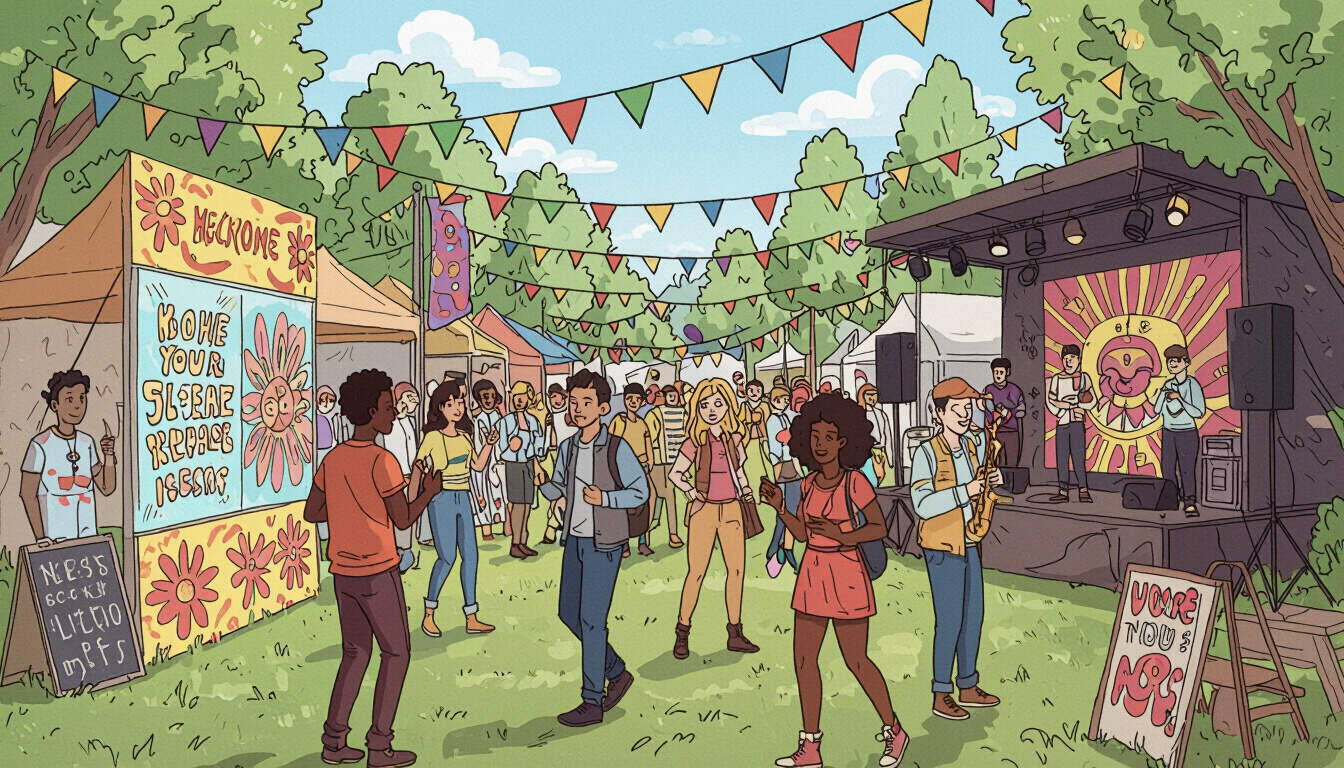Low-Budget Guerrilla Festivals for Niche Market Growth
 by Max Miller
by Max Miller
Discover how small businesses can use creative, low-budget guerrilla tactics at festivals to build brand visibility and connect with audiences in niche markets. This approach offers practical strategies for entrepreneurs to stand out without high costs, fostering innovation and community engagement.

Guerrilla PR represents a creative way for small businesses to gain attention. In the context of festivals, it involves surprising and memorable actions that capture interest. For instance, guerrilla PR at local events can help brands reach specific audiences effectively.
Many entrepreneurs find festivals ideal for testing ideas with minimal investment. These gatherings draw crowds that align with niche interests, making them perfect for targeted promotion. A simple setup, like a themed booth, can spark conversations and build loyalty.
Consider starting with basic tools such as handmade signs or interactive games. These elements create buzz without needing large budgets. Festivals provide a platform where such tactics thrive, allowing businesses to showcase products in fun ways.
One effective method is organizing impromptu performances. A group of staff might perform a short skit related to the brand, drawing passersby naturally. This tactic turns ordinary moments into opportunities for connection, especially in crowded settings.
Key Tactics for Success
To implement these strategies, businesses should focus on preparation and timing. Here are some steps:
- Identify events that match your niche, such as art fairs or community gatherings.
- Plan activities that involve the audience, like quick contests or demonstrations.
- Use social media to amplify the experience, encouraging participants to share their moments.
These steps ensure that efforts align with goals. For example, a local artisan could use a festival to demonstrate crafts, creating a hands-on experience that resonates.
Real-World Applications
In practice, a coffee shop owner might set up a pop-up tasting station at a music festival. By offering samples with a unique twist, such as eco-friendly packaging, they highlight their commitment to sustainability. This approach not only attracts attention but also builds a narrative around the brand.
Another idea involves partnering with other small vendors. Collaborative efforts, like joint giveaways, can extend reach without added costs. Such partnerships foster a sense of community, which is vital for niche markets.
Measuring Impact
After the event, review what worked best. Track metrics like social media engagement or new followers to gauge success. This feedback loop helps refine future tactics, ensuring continuous improvement.
For marketers, the appeal lies in the flexibility of these methods. They adapt easily to different settings, providing tools for ongoing promotion.
Challenges and Solutions
While exciting, these tactics come with obstacles. Limited resources might restrict scale, but creativity overcomes this. For example, using recycled materials for displays keeps costs down while emphasizing values.
Entrepreneurs often face competition at popular events, but niche markets allow for differentiation. By focusing on specific themes, businesses can stand out and connect deeply with interested groups.
Building Long-Term Benefits
Over time, consistent use of guerrilla tactics at festivals can lead to lasting relationships. Customers who engage once are likely to return, turning one-time interactions into loyal support.
In summary, embracing these innovative approaches empowers small businesses to grow. With planning and enthusiasm, festivals become key avenues for brand development.
